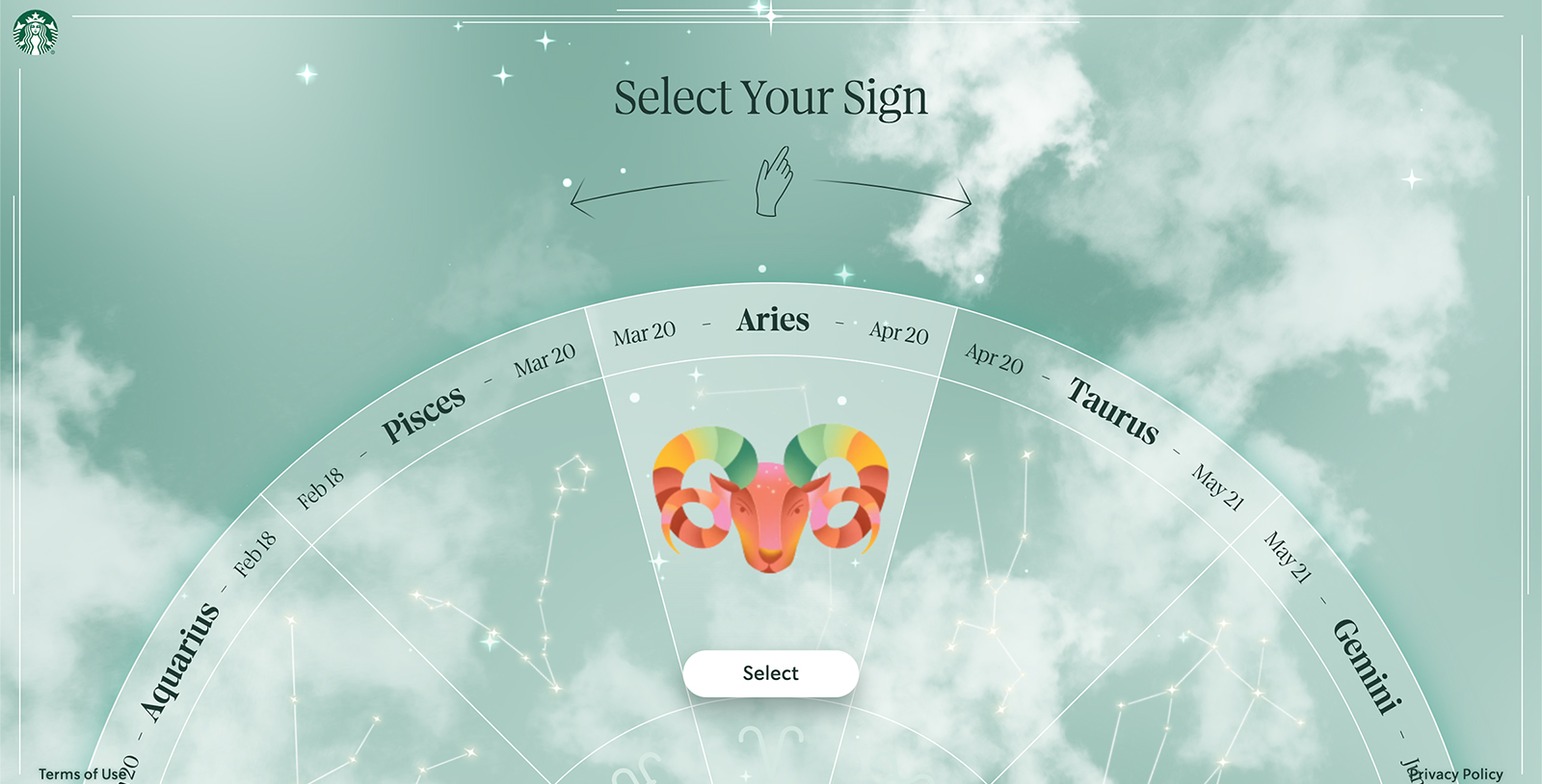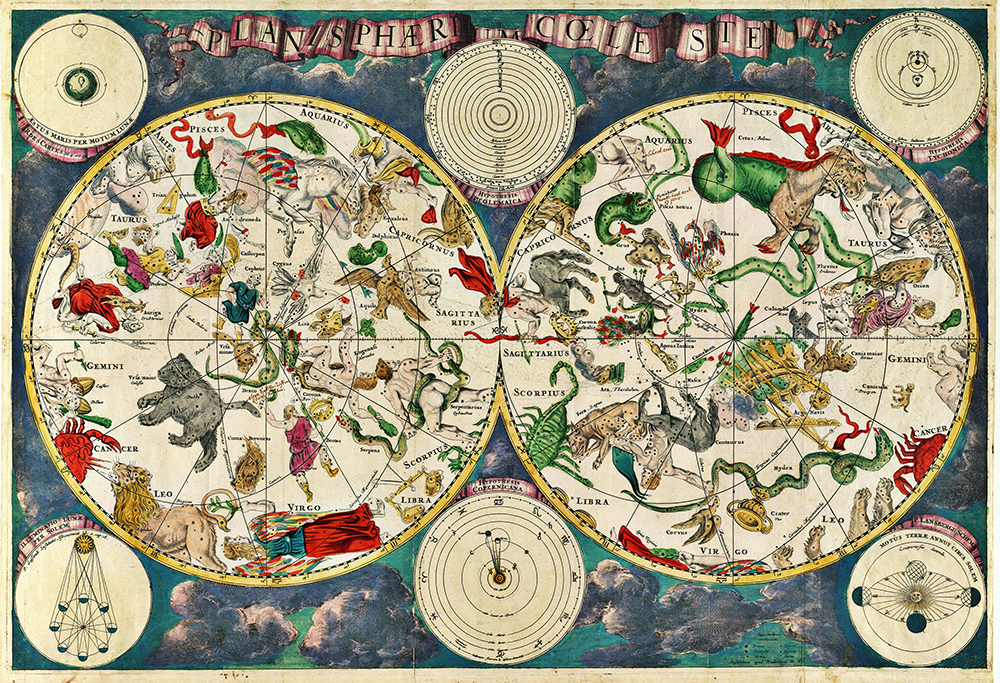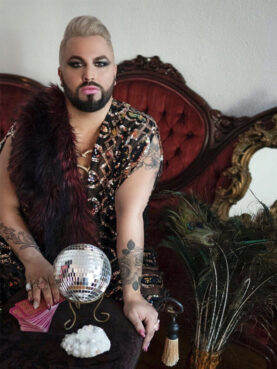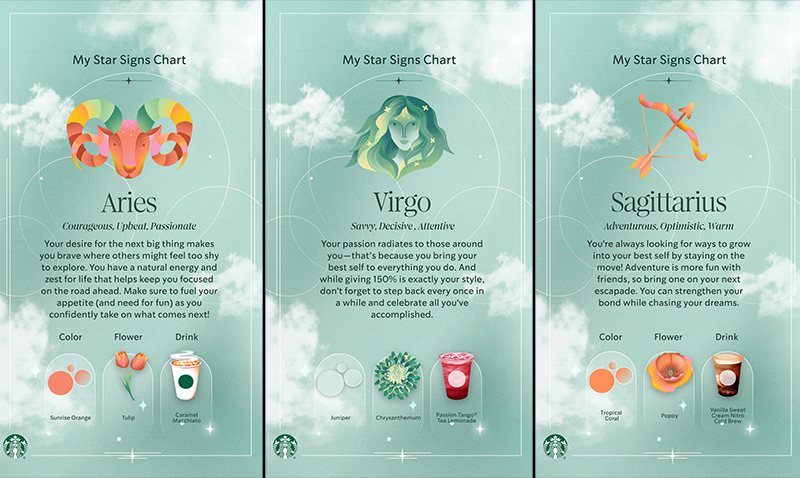(RNS) — Last week’s vernal equinox marked not only the start of spring, but also the start of the astrological year.
The new year begins in Aries, making it a time of energy, excitement and vigor, for new beginnings and a little impulsivity, for going after what you want.
Also, apparently, for new drink recommendations.
Starbucks launched Star Signs on March 20 to coincide with the astrological new year, offering Star Signs charts for customers based on their birth date and what time of day they like to take their coffee break.
The charts, created in collaboration with astrology app Sanctuary, feature a few “power words” and a brief horoscope for that sign. Each also recommends a spring color, flower and Starbucks drink — among them, Passion Tango Tea Lemonade, Iced Matcha Latte and Vanilla Sweet Cream Nitro Cold Brew — to complement the star sign.
“When developing the star sign and drink pairings, we looked at the core personality traits of each sign to identify a beverage that acts as an expression of your planetary ruler,” Sanctuary astrologer Lauren Ash said in a statement to Food & Wine.

Landing page for the newly launched Starbucks Star Signs, a collaboration with astrology app Sanctuary. Screen grab
“These readings are designed to empower anyone, regardless of star sign, to lean into that energy with the fresh start of spring.”
Neither Starbucks nor Sanctuary responded to requests for comment from Religion News Service.
RELATED: Stability is not in the cards for 2023: Divinations reveal a year of transitions
Starbucks isn’t the first company to capitalize on the growing popularity of astrology, which uses the position of the sun, moon, stars and planets to understand what’s happening on Earth and in one’s life and to predict the future.
A number of major companies have partnered with Sanctuary to create branded astrology content, according to Digiday, an online magazine focused on other online media. It’s worked with Google, Pizza Hut and Spotify — even matching the 12 signs of the zodiac to paint colors for Benjamin Moore.

Celestial map from 1670, by Dutch cartographer Frederik de Wit. Image courtesy of Creative Commons
Other brands have created marketing campaigns and new products tailored to the stars, too: Cosmetics brands such as Sephora, wet n wild and Beautyblender have sold zodiac collections. Fashion brand Dior created jewelry for each sign. Taco Bell tweeted pairings for sun, moon and rising signs with various menu items and offered free Nachos RetroGrande during Mercury in retrograde, a time when the planet Mercury appears to move backward.
Not everybody is buying it.
A piece published last year in online LGBTQ+ magazine “Them” decried the “BuzzFeedification of astrology,” saying, “Engaging with these tools as a means for personal branding flattens complex ideas into easily-consumable bites and distorts their meaning.”
Diotima Mantineia — a witch, professional astrologer and tarot card reader, and co-author of the upcoming book “Aries Witch,” part of Llewellyn’s Witch’s Sun Sign series — isn’t thrilled when astrology is oversimplified either.
“It’s not as simple as some people make it out to be. You know, you can’t just say, ‘Oh, you’re an Aries. Therefore, you want a mocha latte,’” she said.

Diotima Mantineia. Photo by Dale Balmer
Even so, Mantineia and other astrologers see the current interest in astrology, memes and marketing included, as a move in a positive direction.
Mantineia has been studying astrology since 1968, she said — long enough to remember when a statement signed by 186 scientists dismissing astrology as unscientific landed on the front page of The New York Times in 1975. “A universe of hokum,” the paper of record called it.
At the time, she said, “it was just not something that you brought up in polite society.”
As an astrologer, she said, she can point to “certain astrological configurations” that all but predicted today’s mainstream interest. She also can point to the advent of personal computers and internet algorithms that have made it a lot easier to cast charts than it is by hand, she said.
After all that she’s seen, Mantineia said, Starbucks creating Star Signs charts for customers is fun and something she hopes will encourage people to dig deeper into astrology.
“I’m happy to see astrology getting some — I won’t say noncontroversial, but, yeah, I guess it is — noncontroversial exposure, because in the long run, I think astrology is an extraordinarily valuable series of techniques,” Mantineia said.
Michael Herkes, a genderqueer astrologer, intuitive stylist and tarot reader who goes by “The Glam Witch” on Instagram, agrees.

Michael Herkes. Photo by Gabriel Vega
Herkes, who recently authored “Glamcraft: The Glam Witch’s Guide to Beauty, Fashion, and Glamour Magic” and is working on another book, tentatively titled “Styled by the Stars,” thinks the appearance of astrology in memes and marketing still can be fun and empowering and create a sense of belonging.
“Is a company, you know, capitalizing off of a spiritual practice or a subset of spiritual practices? Sure, you can call it that. But, you know, did I click the link? Did I look at it? Did I order it? Yes, I did, and it was fun, and I liked it,” they said.
“At the end of the day, as long as it’s providing fun in your life, then, you know, what’s the problem?”
Astrology has never really gone away since it caught attention along with New Age spirituality in the 1970s, said Herkes, who remembers reading horoscopes in TV Guide and in the back of magazines as a kid.
Now, Herkes said, people seem to be “realigning with the stars.”
Younger generations such as millennials and Gen Z began turning to alternative spiritual practices, including astrology, witchcraft, crystal healing, tarot, plants and herbs, during the stress and uncertainty of the COVID-19 pandemic. Caring for one’s spirit, as well as one’s mind and body, is an important part of self-care, Herkes said, and astrology can give people a sense of comfort, empowerment and control of their lives.
“I think we’re searching for answers — that we have questions about the kind of things that mainstream religion might not be providing answers for — and getting those answers from more spiritual practices,” Herkes said.
And maybe even from a Starbucks drink.
RELATED: New poll finds even religious Americans feel the good vibrations





